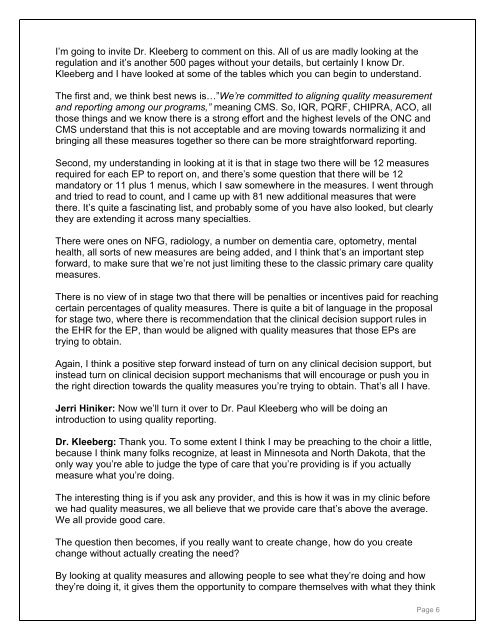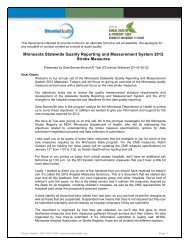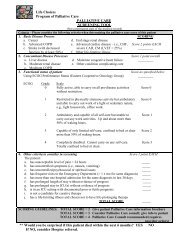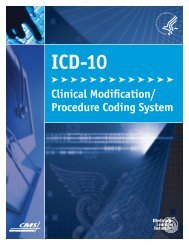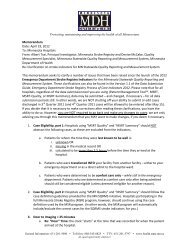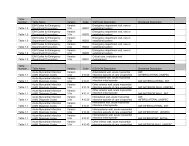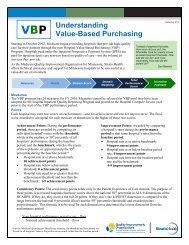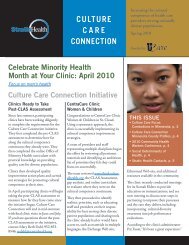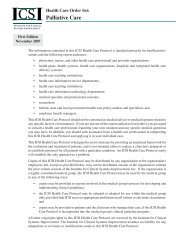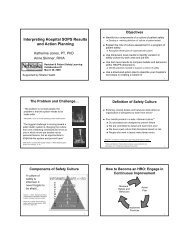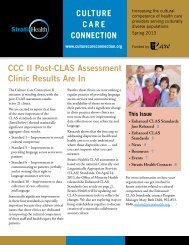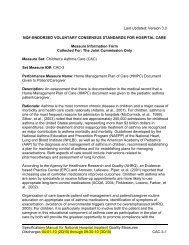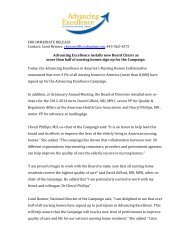Webinar Transcript Template - Stratis Health
Webinar Transcript Template - Stratis Health
Webinar Transcript Template - Stratis Health
Create successful ePaper yourself
Turn your PDF publications into a flip-book with our unique Google optimized e-Paper software.
I’m going to invite Dr. Kleeberg to comment on this. All of us are madly looking at the<br />
regulation and it’s another 500 pages without your details, but certainly I know Dr.<br />
Kleeberg and I have looked at some of the tables which you can begin to understand.<br />
The first and, we think best news is…‖We’re committed to aligning quality measurement<br />
and reporting among our programs,” meaning CMS. So, IQR, PQRF, CHIPRA, ACO, all<br />
those things and we know there is a strong effort and the highest levels of the ONC and<br />
CMS understand that this is not acceptable and are moving towards normalizing it and<br />
bringing all these measures together so there can be more straightforward reporting.<br />
Second, my understanding in looking at it is that in stage two there will be 12 measures<br />
required for each EP to report on, and there’s some question that there will be 12<br />
mandatory or 11 plus 1 menus, which I saw somewhere in the measures. I went through<br />
and tried to read to count, and I came up with 81 new additional measures that were<br />
there. It’s quite a fascinating list, and probably some of you have also looked, but clearly<br />
they are extending it across many specialties.<br />
There were ones on NFG, radiology, a number on dementia care, optometry, mental<br />
health, all sorts of new measures are being added, and I think that’s an important step<br />
forward, to make sure that we’re not just limiting these to the classic primary care quality<br />
measures.<br />
There is no view of in stage two that there will be penalties or incentives paid for reaching<br />
certain percentages of quality measures. There is quite a bit of language in the proposal<br />
for stage two, where there is recommendation that the clinical decision support rules in<br />
the EHR for the EP, than would be aligned with quality measures that those EPs are<br />
trying to obtain.<br />
Again, I think a positive step forward instead of turn on any clinical decision support, but<br />
instead turn on clinical decision support mechanisms that will encourage or push you in<br />
the right direction towards the quality measures you’re trying to obtain. That’s all I have.<br />
Jerri Hiniker: Now we’ll turn it over to Dr. Paul Kleeberg who will be doing an<br />
introduction to using quality reporting.<br />
Dr. Kleeberg: Thank you. To some extent I think I may be preaching to the choir a little,<br />
because I think many folks recognize, at least in Minnesota and North Dakota, that the<br />
only way you’re able to judge the type of care that you’re providing is if you actually<br />
measure what you’re doing.<br />
The interesting thing is if you ask any provider, and this is how it was in my clinic before<br />
we had quality measures, we all believe that we provide care that’s above the average.<br />
We all provide good care.<br />
The question then becomes, if you really want to create change, how do you create<br />
change without actually creating the need?<br />
By looking at quality measures and allowing people to see what they’re doing and how<br />
they’re doing it, it gives them the opportunity to compare themselves with what they think<br />
Page 6


